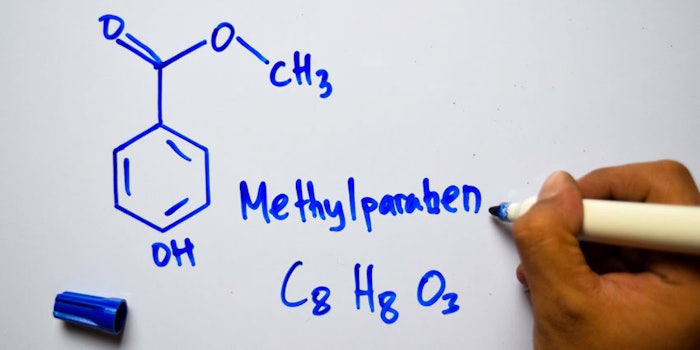
"Mommy blogs" (as they are sometimes called) do well to raise alarm amongst consumers, although they really are just looking out for their families' safety. The problem is when pseudo-scientific groups spread misinformation, and bloggers and consumers embrace it, they dictate the direction of product development in ways they don't understand—ultimately making products that are potentially less safe.
Chris Boone, a scientist at Univar, explained this evolution through the example of parabens during the Midwest SCC November 2019 meeting. He also predicted phenoxyethanol could be next on the cosmetic preservatives chopping block and urged the industry to act now.
See related: Phenoxyethanol as a Safe and Important Preservative in Personal Care
'Chemicals are Bad'
In the field of psychology, the Dunning-Kruger effect is what Wikipedia describes as "a cognitive bias whereby individuals mistakenly assess their cognitive ability as greater than it is." Boone pointed to this effect as the starting point for the spread of misinformation.
"People who have no experience and are not scientifically trained but who are given a small amount of information soar with confidence that they know more than they actually do," said Boone. He showed that even most scientists, armed with experience and the facts, do not reach the levels of confidence held by these non-experts.
Boone highlighted a blog where a homeopathic remedy was given to treat a poisonous copperhead snakebite, rather than visit the emergency room. It is from a similar misguided or misinformed mindset to this where the impression that "chemicals are bad" emerged.
Furthermore, Boone added it does nothing to support the case for science when Google search results on cosmetic ingredients are led by the likes of the Environmental Working Group, the David Suzuki Foundation with its "Dirty Dozen" list, and the Honest Company.
"No doubt, their SEO is optimized to rise to the top," said Boone. "So how, as an industry, can we be sure to get the right message out?"
The Downfall of Parabens
This led Boone to the main point of his discussion: parabens and why formulators can no longer use them. He first reiterated their chemistry and safety, describing their ability to disrupt the membranes of pathogenic microbes and protect users.
But a series of poorly designed studies, i.e., using irrelevant exposure routes and levels, and correlations taken as causations, culminated in parabens' ultimate downfall: Whole Foods releasing its list of unaccepted ingredients for premium body care products. Parabens are among them.
See related: CIR Conclusion, Parabens are Safe
"I believe this was the dagger for parabens," said Boone, who showed Mintel data on methylparaben and butylparaben demonstrating a drastic drop in their use as of 2009 and later. These preservatives are still used; however, to a much lesser degree. This is because, according to Boone, "There's always a need to preserve products for people who are less concerned [about these ingredients]; for example, cheap shampoos—and parabens are a cheap and effective way to do it."
Why Phenoxyethanol Could Be Next
Losing parabens as an option leaves formulators little choice for effective preservation. In fact, as one attendee at the meeting noted, "When we can't use parabens, we use other, less effective ingredients. But when we test them in formulas and they fail, we have to increase their levels so they are effective. And when we do this, they can become even more irritating. What are we supposed to do?"
Boone responded, "You've got to live in this new world and do the best that you can." However, he added the industry can be proactive in protecting what few ingredient options remain; take phenoxyethanol, for example.
"Phenoxyethanol could be the next 'no-no' ingredient," said Boone. "But that's because new research suggests it could be irritating due to impurities and when tested at 100% concentrations—which are not relevant to the levels used in personal care." He urged the industry to act now before this effective (and one of the few remaining preservative options) also is lost to misinformation.
"It's up to us," he said, to which another attendee added, "and it doesn't help when big manufacturers in our own industry make claims of being free-from [perfectly safe] ingredients." All in all, the audience agreed the industry needs a coordinated effort to get the right message out to consumers and legislators; similar to the Public Access to SunScreens (PASS) Coalition, but for preservatives.










